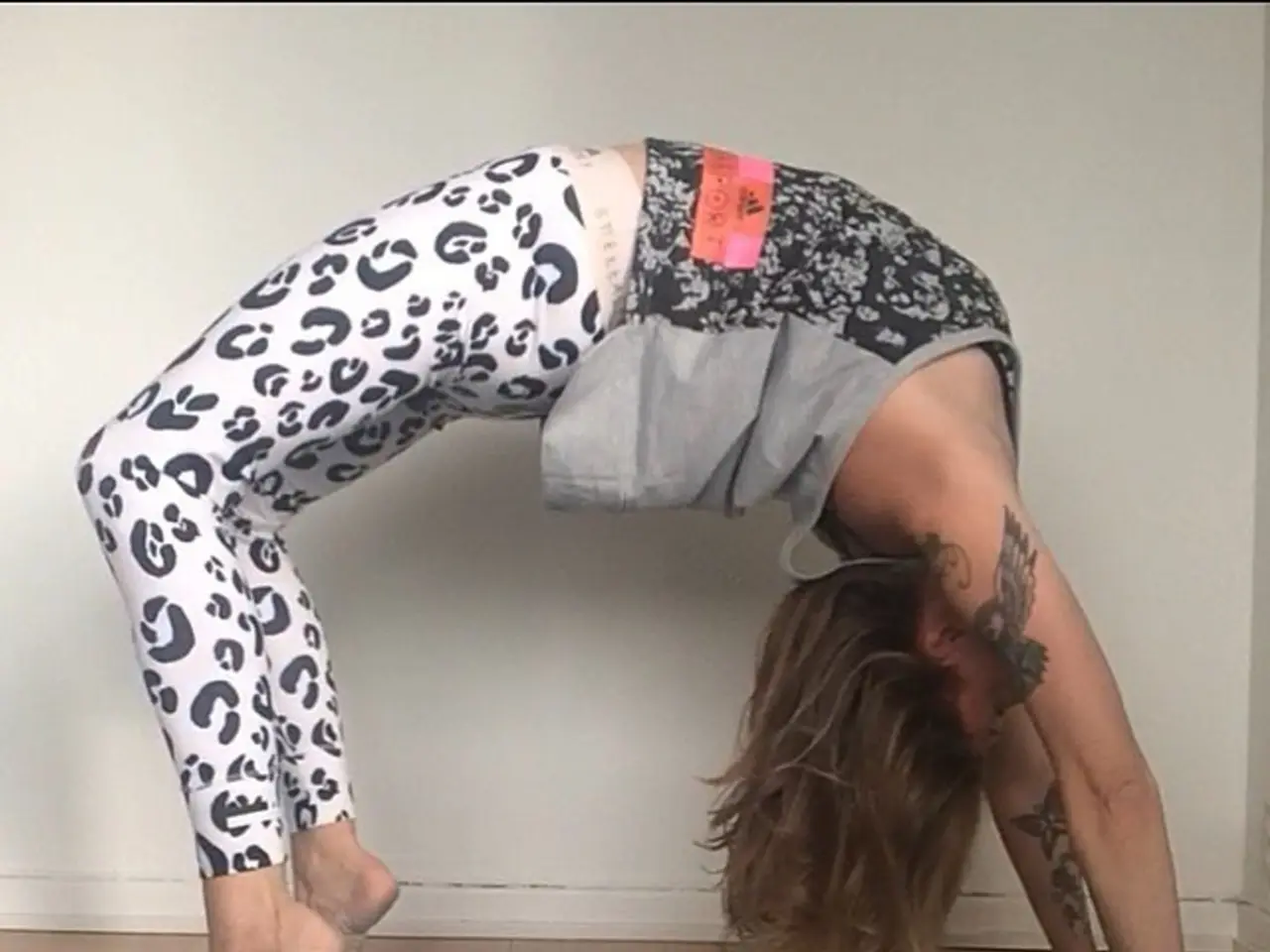Back Pain Treatment: Insights on Inversion Method, Potential Hazards, and Advantages
Inversion therapy, a method that involves suspending oneself upside down to relieve back pain and other ailments, has gained popularity as a relatively inexpensive treatment option. This practice, which can be achieved through the use of inversion tables, chairs, or gravity boots, or certain yoga poses, aims to take the pressure off a person's spine, open up the vertebrae, and increase circulation.
However, it's crucial to approach inversion therapy with caution, as it has specific contraindications for individuals with certain medical conditions. For instance, people with high blood pressure are generally advised to avoid inversion therapy or consult their healthcare provider before using it, as the inverted position can increase blood pressure and intraocular pressure, potentially exacerbating hypertension and increasing the risk of cardiovascular complications.
Similarly, individuals with glaucoma should steer clear of inversion therapy due to its impact on intraocular pressure. The inverted position significantly increases intraocular pressure, which can worsen glaucoma and potentially lead to optic nerve damage and vision loss.
Beyond high blood pressure and glaucoma, inversion therapy is not recommended for those with cardiovascular conditions, stroke history, or certain eye diseases. Pregnant women are also advised to avoid this therapy.
While the evidence for the benefits of inversion therapy is not conclusive, some people find potential benefits in improving spinal health. Yoga poses such as headstands, shoulder stands, Dolphin pose, and Plow pose can be used for inversion therapy, but should be done under the supervision of a trained yoga instructor.
It's important to note that inversion therapy should not be seen as a long-term treatment option or a way to avoid medical treatment. The American College of Physicians states that while inversion therapy does not appear harmful in otherwise healthy people, there is little good-quality evidence for its effectiveness over other techniques.
Inversion therapy may have risks, including decreased heart rate, increased blood pressure, and pressure on the eyeballs and inner ear. Therefore, it's essential to discuss with your healthcare provider before considering inversion therapy to avoid serious complications.
For those who may find relief from chronic back pain through inversion therapy, using inversion equipment or specific yoga poses daily may potentially improve the overall health of the spine and ligaments, reduce pressure on back muscles, and promote more comfortable movements and a more open, flexible body.
A study published in Disability and Rehabilitation found that using an inversion device reduced the need for surgery in some people with lumbar discogenic disease, but more research is needed. Despite the lack of definitive evidence, inversion therapy continues to be a topic of interest for those seeking alternative methods to alleviate back pain.
As with any treatment, it's essential to weigh the potential benefits against the risks and consult with a healthcare professional to determine if inversion therapy is suitable for your specific situation.
- People with high blood pressure or glaucoma should avoid inversion therapy, as the inverted position can increase blood pressure and intraocular pressure, potentially exacerbating hypertension and causing optic nerve damage.
- Inversion therapy is not recommended for those with cardiovascular conditions, stroke history, certain eye diseases, or pregnant women.
- While inversion therapy may potentially improve spinal health for some, it's essential to discuss with a healthcare provider to avoid serious complications.
- The American College of Physicians states that while inversion therapy does not appear harmful in otherwise healthy people, there is little good-quality evidence for its effectiveness over other techniques.
- Inversion therapy, through the use of inversion equipment or specific yoga poses, may potentially improve the overall health of the spine and ligaments, reduce pressure on back muscles, and promote more comfortable movements and a more open, flexible body.




